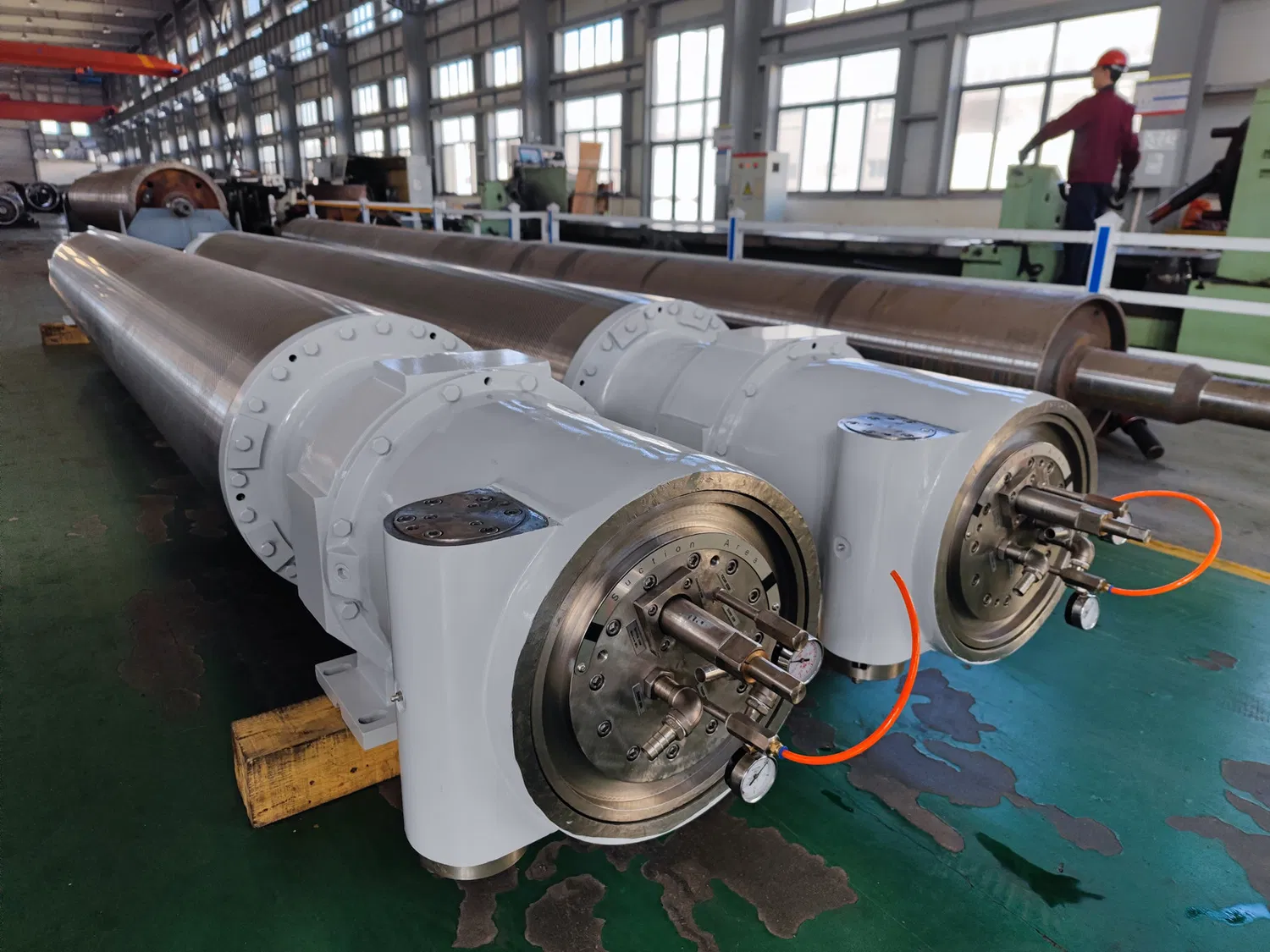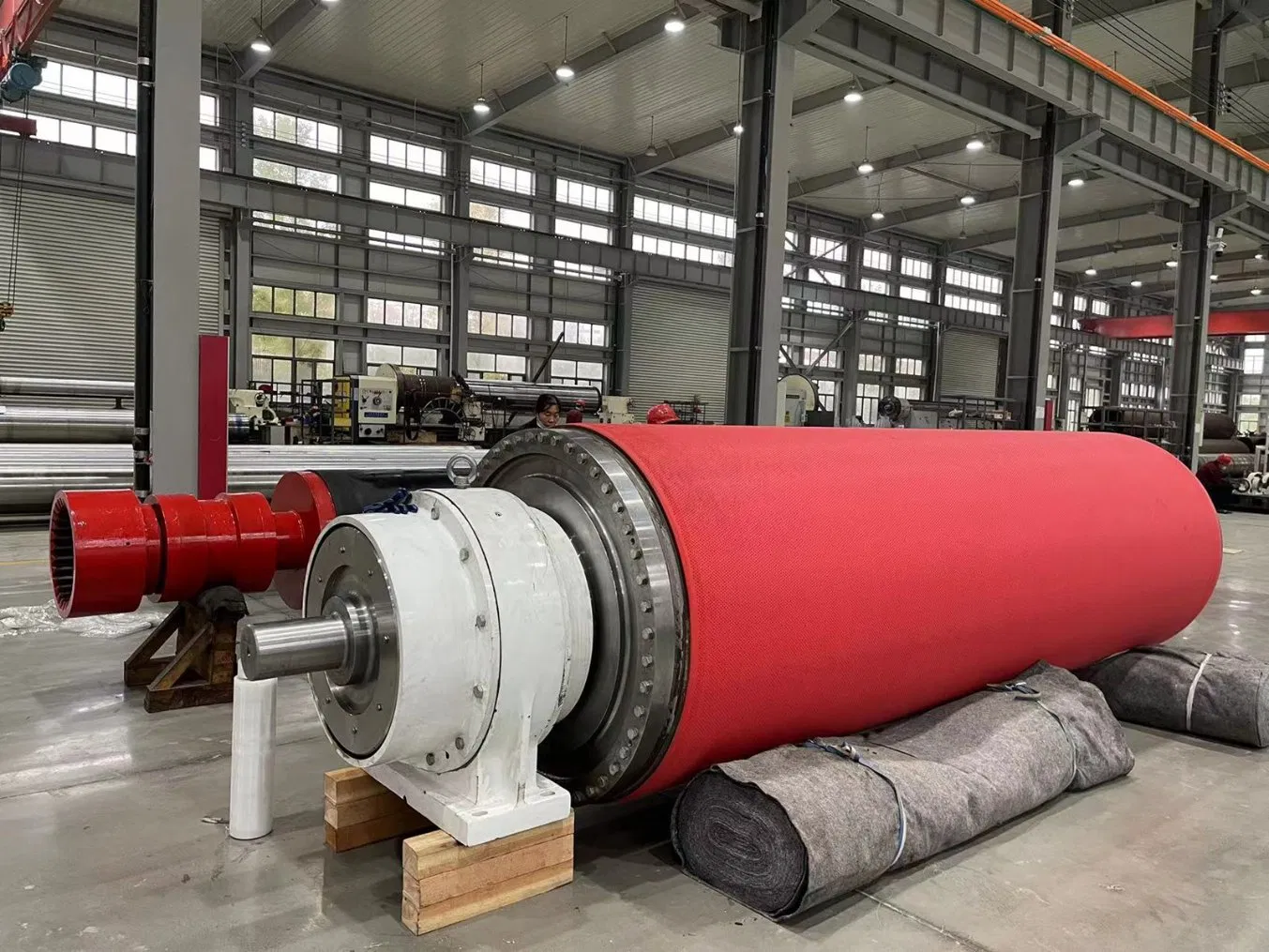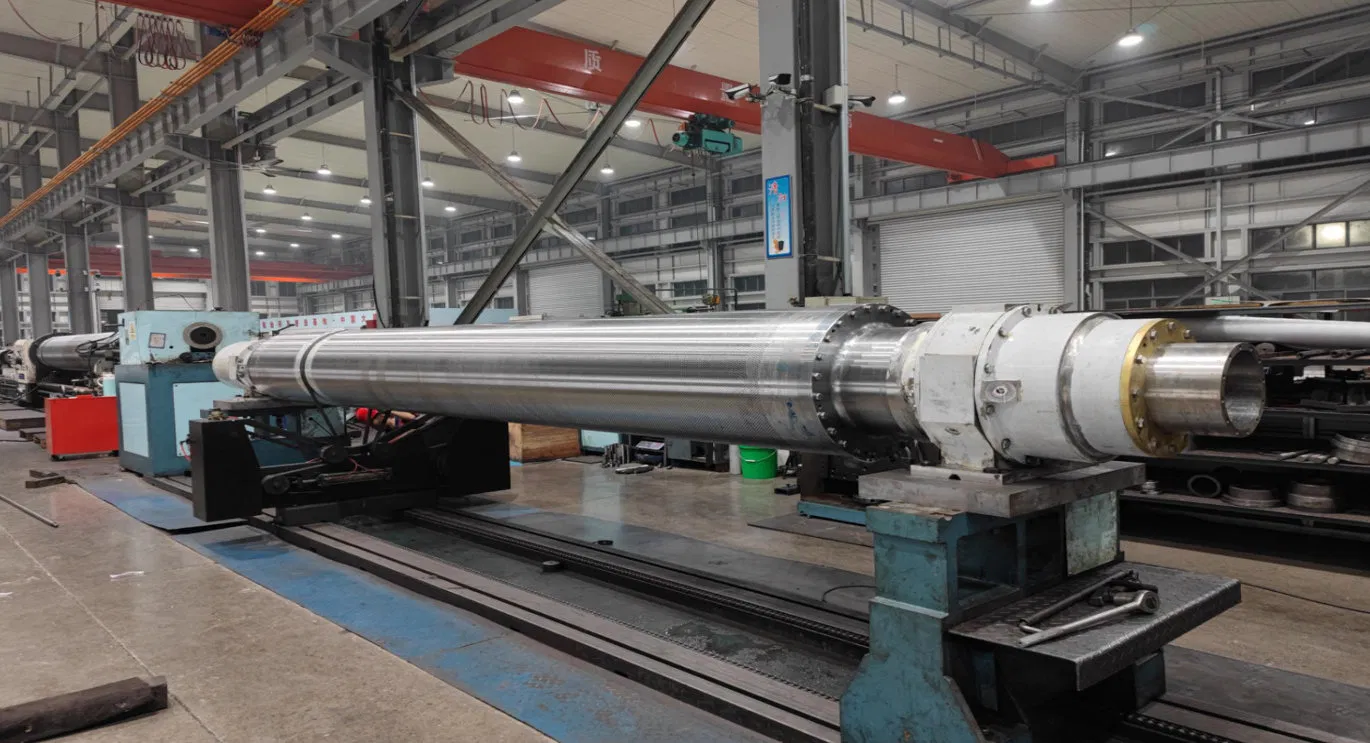Mechanical Imbalance and Misalignment: The Usual Suspects
When we talk about paper machine roll vibration causes, mechanical issues are often the first culprits that come to mind. These are the fundamental problems that can throw an entire system out of whack, leading to persistent and often severe vibrations.Roll Imbalance: A Weighty Problem
One of the most common reasons for roll vibration is imbalance. This occurs when the mass of the roll is not evenly distributed around its axis of rotation. Imagine a car tire that hasn't been properly balanced; at high speeds, you feel that distinct shake. The same principle applies to paper machine rolls, but on a much larger and more critical scale. There are two primary types of imbalance:- Static Imbalance: This happens when the center of gravity of the roll is offset from its rotational axis. It’s like having a heavy spot on one side of the roll. You can detect this even when the roll is stationary, as it will tend to settle with the heavy spot at the bottom.
- Dynamic Imbalance: This is more complex and occurs when the principal axis of inertia is not aligned with the rotational axis. It's often caused by an uneven distribution of mass along the length of the roll, creating a wobbling effect as it spins. This type of imbalance is particularly problematic at higher operating speeds.
Misalignment: The Crooked Path to Trouble
Another major mechanical contributor to paper machine roll vibration causes is misalignment. This refers to the condition where the rolls, shafts, or other rotating components are not perfectly aligned with each machine section or with each other. It might seem like a minor deviation, but even a slight misalignment can introduce immense stress and vibration into the system. Common types of misalignment include:- Angular Misalignment: Where the centerlines of two connected shafts are at an angle to each other.
- Parallel Misalignment: Where the centerlines of two connected shafts are parallel but offset from each other.
- Combination Misalignment: A mix of both angular and parallel misalignment.

Bearing and Component Wear: The Hidden Dangers
While mechanical imbalances are often visible or easily measurable, the internal wear and tear of critical components, particularly bearings, represent another significant category of paper machine roll vibration causes. These issues can develop slowly over time, often going unnoticed until they escalate into major problems.Bearing Failure: The Heart of the Problem
Bearings are the unsung heroes of any rotating machinery, supporting the rolls and allowing them to spin with minimal friction. However, they are also highly susceptible to wear and tear, and their failure is a leading cause of roll vibration. Common causes of bearing failure leading to vibration include:- Lubrication Issues: Insufficient, incorrect, or contaminated lubrication is perhaps the most frequent cause. Without proper lubrication, metal-on-metal contact occurs, leading to excessive friction, heat, and rapid wear of the bearing surfaces.
- Fatigue: Over time, repeated stress cycles can cause microscopic cracks to form on the bearing raceways or rolling elements. These cracks propagate, leading to spalling (flaking off of metal) and a rough running surface, which generates significant vibration.
- Contamination: Dirt, dust, moisture, or even fine paper fibers can enter the bearing housing, acting as abrasive particles that damage the bearing surfaces.
- Improper Installation: Incorrect mounting, excessive force during installation, or misalignment during assembly can damage bearings from the outset, significantly shortening their lifespan and causing immediate vibration.
- Overloading: Operating the machine beyond its design limits or sudden shock loads can put undue stress on bearings, accelerating wear and leading to premature failure.
Roll Surface Defects and Wear: Beyond the Core
It's not just the internal components; the surface of the rolls themselves can be a major source of vibration. Over time, the continuous contact with the paper web, doctor blades, and other rolls can lead to various surface defects. These defects include:- Corrosion and Pitting: Chemical attack or moisture can lead to surface degradation, creating uneven spots.
- Flat Spots or Eccentricity: Uneven wear can create flat spots, especially on press rolls, or cause the roll to become eccentric (not perfectly round). Both lead to a pulsating vibration as the roll rotates.
- Cracks or Damage: Physical impact or fatigue can cause cracks or chips on the roll surface, creating significant disturbances during rotation.
- Coating Issues: For coated rolls, uneven coating application, chipping, or delamination can introduce surface irregularities that cause vibration.
Operational and Process-Related Factors: Beyond the Hardware
While mechanical issues are often the primary focus, it's a mistake to overlook the significant role that operational practices and process conditions play in contributing to paper machine roll vibration causes. Sometimes, the problem isn't with the machine itself, but with how it's being run or the materials it's processing.Web Tension and Consistency: The Paper's Role
The paper web itself can be a surprising source of vibration if not managed correctly.- Uneven Web Tension: If the tension of the paper web running through different sections of the machine is not uniform, it can create varying loads on the rolls. This uneven loading can induce vibration, particularly in sections like the press or dryer.
- Web Breaks: Sudden web breaks cause immediate and drastic changes in load on the rolls, leading to shock vibrations that can damage components and misalign the system.
- Basis Weight Variations: Inconsistent basis weight (the weight per unit area of the paper) can lead to uneven loading and pressure distributions across the roll face, contributing to vibration.
Hydraulic System Pulsations: The Fluid Dynamics
Many paper machine rolls, especially in the headbox and press sections, rely on hydraulic systems for pressure application or internal flow. Pulsations within these hydraulic systems can transmit vibrations directly to the rolls. Consider the following:- Pump Pulsations: Malfunctioning or improperly maintained hydraulic pumps can generate pressure pulsations that travel through the fluid lines and into the roll loading mechanisms.
- Valve Chatter: Faulty or rapidly cycling valves can create pressure spikes and drops, leading to unstable hydraulic pressure and subsequent roll vibration.
- Air Entrapment: Air pockets within the hydraulic fluid can lead to a spongy response and erratic pressure, resulting in vibration.

Advanced Diagnostics and Prevention Strategies: Tackling the Problem
Understanding the various paper machine roll vibration causes is only half the battle; the other half is effectively diagnosing and preventing them. Modern technology offers sophisticated tools that can help maintenance teams stay ahead of these issues.Vibration Analysis: Listening to Your Machine
Vibration analysis is, to be honest, the cornerstone of any effective predictive maintenance program for paper machines. It involves using specialized sensors (accelerometers) to measure the vibration patterns of rotating components. These patterns, when analyzed by trained professionals, can reveal a wealth of information about the health of the machine. Key insights from vibration analysis include:- Bearing Condition: Specific frequencies and amplitudes indicate wear, lubrication issues, or impending failure in bearings.
- Imbalance and Misalignment: Characteristic vibration signatures can pinpoint whether the issue is imbalance (often at 1x RPM) or misalignment (often at 1x or 2x RPM).
- Gear Defects: Worn or damaged gear teeth produce distinct vibration frequencies.
- Looseness: Loose components often show up as broadband vibration or harmonics.
Preventive and Predictive Maintenance Programs: A Proactive Stance
Beyond reactive repairs, a robust maintenance strategy is critical for preventing roll vibration.- Precision Alignment: Utilizing laser alignment tools for all rotating components during installation and after maintenance is non-negotiable. This ensures that shafts and rolls are perfectly aligned, minimizing stress and vibration.
- Dynamic Balancing: Regular dynamic balancing of rolls, especially after regrinding or repair, is vital. This ensures even mass distribution and smooth rotation at operating speeds.
- Lubrication Management: Implementing a strict lubrication schedule with the correct type and amount of lubricant, along with regular oil analysis, prevents premature bearing wear.
- Roll Grinding and Maintenance: Regular inspection and professional regrinding of rolls maintain their optimal surface profile and concentricity, preventing vibrations caused by surface defects.
- Structural Integrity Checks: Periodically inspecting the machine frame and foundation for signs of settling, cracks, or looseness is important, as these can transmit and amplify vibrations.

The Ripple Effect: Impact of Roll Vibration on Paper Quality and Operations
It's important to fully grasp that paper machine roll vibration causes aren't just about mechanical noise or potential breakdowns. The consequences ripple throughout the entire paper production process, often leading to significant quality defects and operational inefficiencies.Degradation of Paper Quality: The Visible Flaws
The most direct and visible impact of roll vibration is on the quality of the final paper product.- Barring and Corrugations: Vibrations, especially those caused by eccentric rolls or bearing issues, can create distinct patterns of varying thickness or density across the paper web. These appear as "bars" or "corrugations" and are a clear sign of vibration.
- Caliper Variations: Uneven pressure application due to vibrating rolls leads to inconsistent paper thickness (caliper), which can affect subsequent converting processes and end-product performance.
- Surface Roughness and Printability Issues: Vibrations can lead to a less uniform and rougher paper surface, negatively impacting printability, coating application, and overall aesthetic appeal.
- Reduced Tensile Strength and Formation: Severe vibrations can disrupt the fiber network during formation and pressing, leading to weaker paper with poor formation characteristics.
Operational Inefficiencies and Increased Costs: The Hidden Drain
Beyond quality, roll vibration takes a heavy toll on operational efficiency and profitability.- Increased Downtime: Vibrations accelerate wear on components, leading to premature failures and unplanned machine shutdowns for repairs. This lost production time is incredibly costly.
- Higher Maintenance Costs: Frequent component replacements (bearings, rolls, couplings) due to vibration-induced wear drive up maintenance expenses significantly.
- Reduced Machine Speed: To mitigate severe vibrations and prevent further damage, operators may be forced to reduce machine speed, directly impacting production output.
- Energy Consumption: Vibrating components generate more friction and heat, leading to increased energy consumption.
- Safety Hazards: In extreme cases, severe vibration can pose safety risks to personnel and lead to catastrophic equipment failure.
Conclusion: A Smooth Path to Productivity
The intricate world of paper manufacturing demands precision, and any deviation from smooth operation can have profound consequences. From mechanical imbalances and misalignments to the subtle wear of bearings and the dynamics of the paper web itself, the paper machine roll vibration causes are multifaceted and interconnected. Ignoring them is simply not an option for any serious paper producer. By embracing a proactive approach that combines rigorous preventive maintenance with advanced predictive technologies like vibration analysis, manufacturers can not only diagnose issues early but also prevent them from escalating. This commitment to understanding and mitigating vibration ensures not just the longevity of the machinery but also the consistent production of high-quality paper, ultimately safeguarding productivity and profitability. A smooth-running paper machine isn't just a goal; it's a testament to meticulous engineering and diligent maintenance.For more detailed information, please visit our official website:paper machine roll vibration causes
About the author: Dr. Anya Sharma is a seasoned mechanical engineer with over 15 years of experience specializing in rotating machinery diagnostics and maintenance within the pulp and paper industry. Holding a Ph.D. in Tribology, her expertise lies in identifying and mitigating complex vibration issues in paper machine rolls. She is passionate about sharing practical insights to help manufacturers optimize machine performance and extend asset life.


